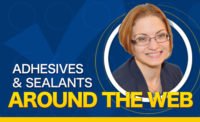But let’s hold a telescope up to post-modern time by checking out what a historian distanced from our industry has to say. Here are some predictions from W. Warren Wagar in the third edition of his “nonfictional fiction” book, A Short History of the Future, University of Chicago Press, 1999.
Without exception, our panel of experts agreed that the flourish of activity in mergers and acquisitions will continue. Wagar concurs, predicting that “by 2015 there will be a small cluster of 12 giants, with combined annual sales of nearly U.S. $20 trillion.” A hypothetical representative megacorp is “… the Japanese-American behemoth General Industries (GI) formed in 2011 as the result of the “supermerger” of three oil companies, two electronics companies and two automobile manufacturers.” In light of recent events, this even sounds plausible.
So, what will your workday be like? The trend toward a more automated workplace will continue into the next half of the new century, largely attributable to computer science. “Computers will write and send letters, advise government officials, manage air traffic, design weapons, plan advertising campaigns, conduct medical research. ….their usefulness multiplied many times over with the perfection of artificial intelligence…”
In the new century, our habits will probably be the same, including attending technical meetings. But, bad news, guys. At the annual banquet, you may not see any steak on the menu. How about a healthy serving of soy and farm-fresh mackerel?
Wagar says “. . . the public heeded the advice of physicians and cut its consumption of animal food throughout the developed world by 50 percent between 2005 and 2025. Even the world-famous American hamburger…found itself upstaged in the fast-food chains by the “earthburger,” a palatable concoction of lentils and tofu reinforced by vegetable adhesives that gave it the same texture and moisture as meat. . .”
And how did you get to the meeting? Wagar says that in the last age of capital, the most significant status symbol and index of personal wealth was the large private automobile. “The waste of resources defies calculation….As a result, public transportation atrophied, forcing more and more citizens to buy private vehicles.”
By mid-century, “personal vehicles were made available by transport cooperatives for rental, but the sale of anything larger than a battery-powered cart big enough to seat two persons was prohibited by law. Almost all travel, local or otherwise, took place on state-operated urban rail systems, supersonic magnetic floater trains, or air and spacecraft.
So, we have a good 50 years before we have to alter our experts’ predictions that the auto industry will be a burgeoning market for adhesives. And, I, for one, don’t plan to give up my wheelcs yet!

